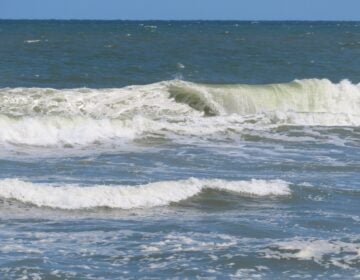Many municipalities find UV light a greener way to purify water
Though chlorine has been the most common and well-known method of water treatment for many decades, in Logan Township, another form of disinfection reigns supreme.
Logan Township has used ultraviolet (UV) light treatment to disinfect its wastewater for many years and a new addition to their current plant ensures that they will use the alternative method for many years to come.Currently, their wastewater reclamation facility is outdated, said Logan Twp.’s Municipal Utilities Agency (MUA) Executive Director Joe Weber, so the addition was needed to bring the facility up to date.
As a wastewater treatment plant, the facility receives the municipality’s wastewater, cleans it and empties it into the adjacent Delaware River.
The project has been needed for a number of years, explained Weber, but it had to be put on hold due to the decline in economic climate. This year, it was finally able to move forward with “no impact to taxpayers.””Not everybody is using [UV],” Weber said. “It all depends on where you go.”
“For bigger plants, UV is not cost effective,” explained Weber. “They usually go with what is cheaper.”But there are major benefits to UV as a disinfectant, Weber said, the most notable of which is that no chemicals needed to clean the water.
He explained that UV water treatment works by mutating the pathogens’ DNA. When wastewater passes through tubes lined with UV lamps, the few seconds of exposure damage the DNA of the pathogens, preventing reproduction. Pathogens tend to reproduce very quickly so stopping reproduction is the first goal. Then, because the chemical bonds that hold the atoms of the DNA together are disrupted, the damage is severe enough that the pathogen cannot repair itself and it dies. This process effectively disinfects the water of any harmful pathogens.
According to the EPA, UV water treatment is also effective against chlorine-resistant pathogens like Cryptosporidium, which causes gastrointestinal infection in humans.
Traditional chlorine disinfection uses 100 percent chlorine gas to clean wastewater, which can be dangerous for workers and the surrounding population if a spill were to happen, said Weber. He explained that bleach, with its strong aroma, is only 3-5 percent chlorine. Other stronger cleaners that contain sodium hyperchlorite are 15 percent chlorine, so 100 percent chlorine gas is substantially stronger than both of those solutions.
Chlorine storage requires special permits and housing, because, as seen recently following the vinyl chlorine spill in Paulsboro, leaks of any kind can be damaging not only to the MUA workers but also to the surrounding population and environment. With UV, there are no special permits or housing requirements, and “everything is on site,” he said.
Logan Twp. still “always put guys through training” to work with UV, said Weber. The only real concern to his workers is eye protection, he continued. Just like sunglasses provide protection for eyes from the sun’s UV rays, those working with the UV light have to wear a special face shield to protect their eyes from the light. If the UV light were to shine in unprotected eyes, the person would feel as if hot sand was thrown in his or her eyes.
However, there is absolutely no risk at all to the surrounding community. No gases will ever leak into the air, explained Weber. Nothing about the UV light is harmful to humans.
Hikers are also more frequently turning to UV for water purification. UV technology is available on a portable basis from like the SteriPen which can be inserted in a bucket of water to kill the pathogens and the CamelBak AllClear water bottle can disinfect drinking water from freshwater sources in under a minute. There has also been discussion that third world countries may turn to portable UV technology as a local water treatment option.
There is no residual effect to the water from UV either. Unlike water that is treated with chlorine gas, UV-treated water is not corrosive to metals so maintenance costs are decreased.
Though the water from the facility is not recycled back into the water system for drinking, the reclaimed water from Logan Twp.’s plant empties into the Delaware River, so this means that no chlorines are being released into the waterway.
Few people in Logan Twp. are aware that the municipality uses UV light to treat its wastewater, however. “Most people don’t know where their water goes when they flush their toilet,” said Weber, and they only time anyone ever begins to question is “when their sewer rates go up.”
There are no statistics available on how prevalent UV water treatment is in New Jersey municipalities.
WHYY is your source for fact-based, in-depth journalism and information. As a nonprofit organization, we rely on financial support from readers like you. Please give today.




